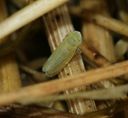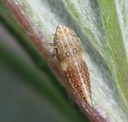Paralimnini
Paralimnini
Classification
- Phylum: Arthropoda
- Subphylum: Hexapoda
- Class: Insecta
- Order: Hemiptera
- Suborder: Auchenorrhyncha
- Infraorder: Cicadomorpha
- Superfamily: Membracoidea
- Family: Cicadellidae
- Subfamily: Deltocephalinae
- Tribe: Paralimnini
Pronunciation
How to pronounce Paralimnini: /ˌpærəˈlɪmnɪnaɪ/
These audio files are automatically generated. While they are not always 100% accurate, they are a good starting point.
Images






Summary
Paralimnini is a diverse tribe of leafhoppers known for their wide distribution and variety of species, playing an essential role in grassland ecosystems.
Physical Characteristics
Members of the tribe Paralimnini are characterized by their small size, often with distinctive shapes and coloration typical of leafhoppers.
Identification Tips
Look for the distinctive leafhopper morphology, including the shape of the body and the presence of specific markings or patterns on the wings.
Habitat
Paralimnini predominantly inhabit grasslands, often found on grasses and sedges.
Distribution
This tribe has a cosmopolitan distribution, found in various regions around the world.
Diet
Primarily feed on plant sap, particularly from grasses and sedges.
Life Cycle
The life cycle typically includes egg, nymph, and adult stages, with nymphs resembling smaller versions of adults but lacking fully developed wings.
Reproduction
Reproduction is sexual, with females laying eggs in plant tissues.
Predators
Predators include various insectivorous birds and predatory insects such as spiders and other insect predators.
Conservation Status
Not specifically assessed; however, habitat loss can impact populations.
Ecosystem Role
Important role as herbivores in ecosystems, contributing to plant health and serving as prey for other organisms.
Economic Impact
Can be agricultural pests as some species may transmit plant diseases.
Collecting Methods
- Sweep netting
- Pan trapping
- Hand collection
Preservation Methods
- Ethanol preservation
- Drying and pinning
- Labeling and cataloging
Evolution
Part of the larger group of Hemiptera, specifically in the subfamily Deltocephalinae, showing significant evolutionary diversity within grassland habitats.
Similar Taxa
Misconceptions
Often confused with other leafhoppers, which may lead to incorrect identification in the field.
Tags
- Leafhoppers
- Hemiptera
- Cicadellidae
- Paralimnini
- Ecology